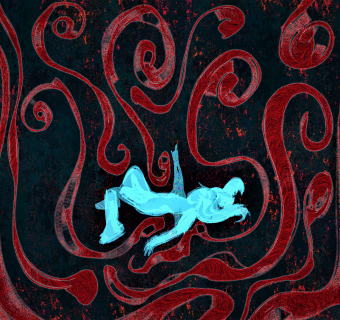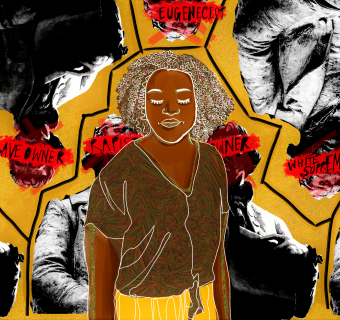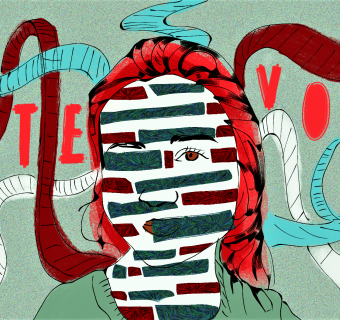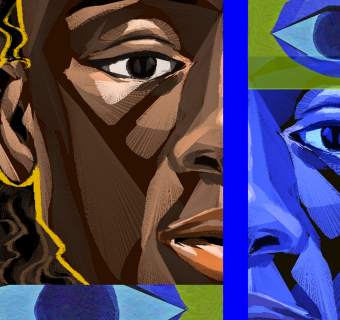During the month of February, African American History Month, we, as a nation, celebrate the accomplishments of black men and women and reflect upon the continuing struggle for equal opportunity in our country.
At Iris, we decided to take a look at the history of these struggles in our local community by interviewing a journalist for The Hook, Barbara Nordin.
When Nordin was volunteering at the Cedars nursing home in 2013, she heard a story that piqued her curiosity, and she set out to learn more. Later that year, she published an article in which she tells the story of Charlottesville native Eugene Williams as he recounts his experience growing up during the 1930s.
Iris had the opportunity to interview Nordin and discuss this piece, as it remains relevant during African American History Month.
Alaina Segura: What inspired you to write about the topic of race relations in Charlottesville?
Barbara Nordin: I wasn't interested in writing about race relations per se, but rather in doing an oral history of Eugene Williams.
AS: What made this topic newsworthy at the time of your original publication in 2013? What makes it relevant to re-read now?
BN: Nothing made it more newsworthy in 2013 than anytime else--which is to say that the dynamics of racism are always newsworthy.
AS: Why do you think “the dynamics of racism” are an enduring topic in the media? What specific news values make the dynamics of racism newsworthy?
BN: The same way any form of discrimination is, or sexual violence, or a number of other human behaviors that inflict widespread suffering--especially when they're sanctioned, or effectively sanctioned, by law or the wider society.
AS: How did you find this source, Eugene? What was the process like of getting to know him through your interview and reporting?
BN: We'd known each other slightly for more than 20 years. I'm a volunteer at the Cedars (a local nursing home), and every week the activities director and I lead a discussion group. I invited Eugene to join us as a guest speaker in February 2013, because it was Black History Month and I knew that the residents would be excited to hear that he was coming.
That afternoon, sitting in a circle with elderly residents, both black and white, he described what it had been like to grow up on a narrow dirt street in downtown Charlottesville, where almost no one had indoor plumbing, a telephone, a car--or even, for many, electricity--and to walk to school every day up a wide, modern--i.e., white--street like Ridge Street, which in those days was lined with the homes of well-to-do professionals and business owners.
As we were leaving, I asked whether he'd ever been interested in oral history, and he said he had. We got together a couple of weeks later and talked about our expectations, and he agreed to allow me to interview him and research his past.
I decided that I wanted to focus very closely on one year and chose 1936, when he was nine, and the fall of 1937, when his father had been killed by a U.Va. student driving recklessly down West Main Street.
We worked together for about six months, which included an hour and a half to two hours of face-to-face interviews in his home most weeks, supplemented by online and primary-document research on my part, and conversations with friends and relatives about that period of their lives on his part. We also drove and walked around the blocks downtown that he had walked through on all those trips between his home on Dice Street and "the colored school," Jefferson, at Fourth and Commerce Streets.
AS: How did you manage remaining objective while still building a rapport or trustworthy relationship with your source, Eugene, most especially during emotional moments of when he would recall memories of the past?
BN: It was easy for us to establish rapport. Eugene is a superb historian on the subject of Charlottesville during Jim Crow, Massive Resistance, school desegregation, and a series of other events, such as sit-ins in the 1960s to open restaurants and other public facilities to blacks.
But he's also funny, and kind, and someone you just plain want to know. For his part, if you asked Eugene about why he let me get so close to his history and memories, I think he'd say that he trusted me because he knew I'd be objective and--as he remarked more than once--keep asking the right questions.
AS: Considering the amount of time and work you put into this piece, what difficulties or challenges did you experience in this reporting process?
BN: Any time a person allows his or her life to be explored in such terrific detail, lots of emotions can arise. I wanted to do an oral history of my father's childhood and young adulthood, for instance, but after one cassette's worth of a taped interview, he said he didn't want to continue because it depressed him to talk about that part of his life.
AS: What was the convincing or motivating factor that inspired you to do something out of your routine or comfort zone as a reporter and writer?
BN: It was Eugene's description of walking every day with his little brother to the Jefferson School. He said that as he walked up Ridge, with all its big houses, he knew a lot about the owners and their families (their names, what kind of business or profession the father was in, etc.)--yet to them, he was practically invisible. I thought about how much was involved, for him, in turning that corner (from Dice onto Ridge), and I wanted to know the details of his life at that point.
AS: What other writing do you enjoy? What are you working on right now?
BN: My work with Eugene was something of a departure for me; I'm mainly a freelance investigative reporter. Right now I'm working on a nonfiction book proposal about the 1986 disappearance of Patrick Collins, who was a U.Va. graduate student; the case took 27 years to solve. I've created a website about the story, which involved egregiously unethical behavior on the University's part.
AS: What advice would you give early or young reporters/writers wanting to write a similar long-form feature on a source?
BN: It comes down to letting your curiosity guide you. Keep prodding your subject to describe a setting or event in granular detail. If you ask, "What was it like when you woke up on a school day?," don't settle, for instance, for "We got out of bed and went downstairs and had breakfast."
Say, "Wait! Describe the bedroom. Did you share it? Since you didn't have indoor plumbing, did you have to empty a chamber pot? What was a typical school outfit for you in 1936? Since your parents left for work before you woke up, who made breakfast, and what did you have?" That's where things get fascinating. Don't take anything for granted.
In writing a piece that transports the reader back in time and provokes a reflection of our nation’s past, present and future, this advice from accomplished journalist Barbara Nordin should certainly be heeded.






